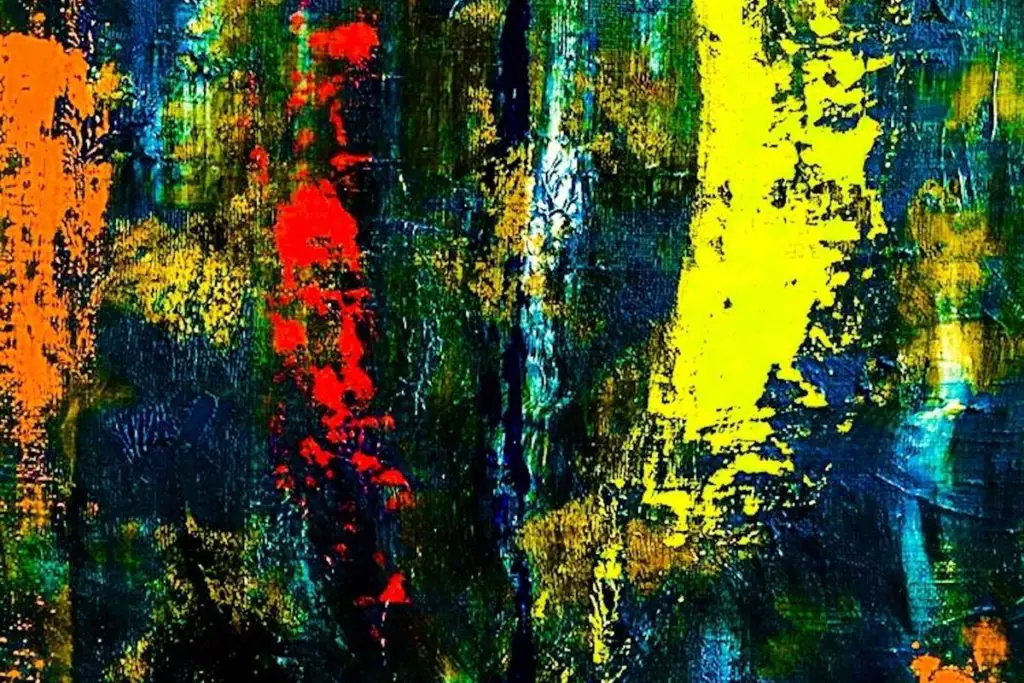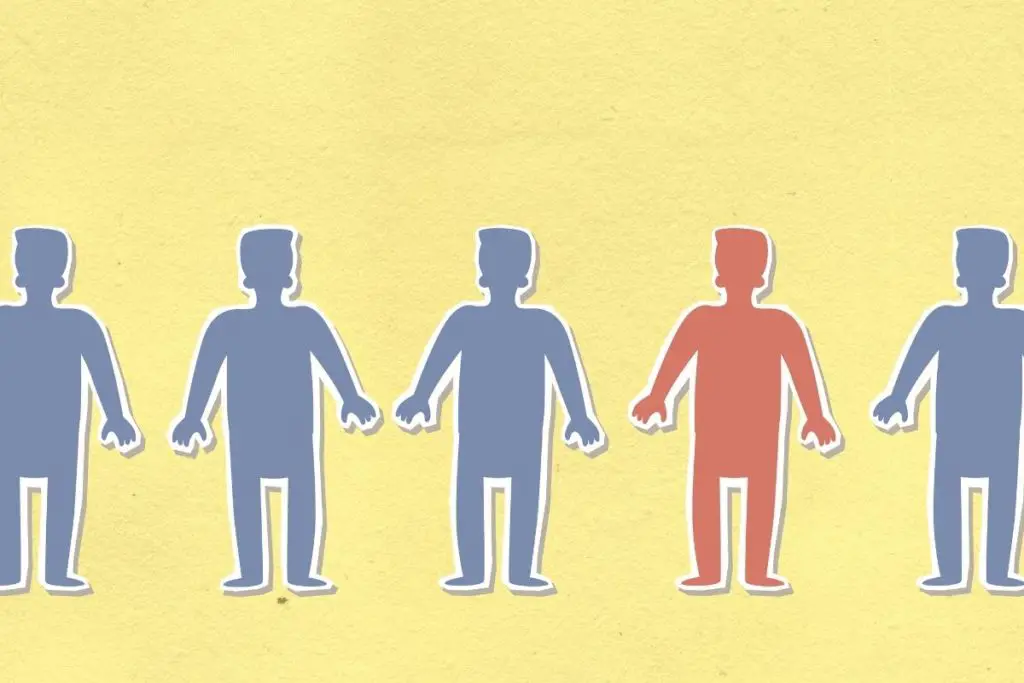Easy Drawing of Emphasis Using Contrast in Art
The Emphasis in Art is when an Artist gives importance to any specific object or area in his artwork, thereby dominating the viewer's eyes.
It is the first thing that someone notices in an artwork.
It usually stands out; thereby, it attracts viewers' interest.
A viewer will first see or observe unusual things and out of the ordinary. A viewer will also look at something like a direction arrow on the road.

An artist takes this as an advantage and tries to emphasize the subject where he wants his viewers' attention, and that principle is called Emphasis.
Sometimes an artwork can have multiple emphasis points, but mostly only one dominates, leading to clarity.
Contents
- 1 Principle of Art Emphasis
- 2 What is the Definition of Emphasis in Art?
- 3 How to create Emphasis?
- 3.1 Emphasis in Art – Creation of a Focal Point
- 3.1.1 Emphasis by Convergence
- 3.1.2 Emphasis using Contrast
- 3.1.3 Emphasis by Separation or Isolation
- 3.2 Emphasis by Creation of Exception
- 3.3 Emphasis by Subordination
- 3.1 Emphasis in Art – Creation of a Focal Point
- 4 Example of Emphasis in Art?
- 5 What is the Importance of Emphasis?
- 6 What Next?
Principle of Art Emphasis
Emphasis is one of the principles of art that helps pull viewers' attention to a specific point. The other Principles of Arts are as follows: –
- Balance
- Proportion
- Unity
- Harmony
- Variety
- Emphasis
- Rhythm
- Movement
What is the Definition of Emphasis in Art?
The Emphasis in Art is one of the 8 Principles of Art. An Artist uses the Elements of Art to draw (pun intended) attention to a specific object or particular section referred to as a Focal point when he creates his artwork.
The key factor which creates Emphasis is the interest it makes in a specific object (focal point). If there is no attention, then we can say that there is no emphasis on the artwork, and it will look bland.
However, knowingly, or unknowingly an artist creates Emphasis in his painting to make some interest inside the artwork.
To give emphasis only to beauty makes me think of a mathematics that deals with positive numbers only.
PAUL KLEE, SWISS GERMAN ARTIST
How to create Emphasis?
You can try this for yourself a few times. Take a picture or painting, pause a movie scene on television, go out of the house, look at what is outside.
Now please close your eyes for some time and open them. What is the first object you noticed, or what is the first area in the picture that attracted you?
A visual artist creates Emphasis using several techniques with the elements of art. The artist gives more importance to a specific object than its surroundings, thereby creating Emphasis.
Emphasis in Art – Creation of a Focal Point

An amateur artist copies a scene that he sees or imagines, and the composition does not focus.
A professional creates a focal point to attract the viewer's eye to a specific object or topic in the art. The artist uses different techniques depending on how intensely he wants his viewers to look at the point. Emphasis is a skill that you will gain from sheer practice and over time.
An artist from his experience and practice can gauge how the artist will appreciate his focal point placement.
Emphasis by Convergence

Convergence in art refers to linear perspective, and all the lines converge to a single point: the focal point or the vanishing point.
Line of convergence, arrows, perspective all draw attention to the focal point. These lines draw closer as it moves further and automatically lead our eyes to the focal point.
Artists also use implied lines to direct attention to a specific object or particular section.
We can see Emphasis by convergence in outdoor drawings, especially in pictures where people draw buildings and perspective and implied lines.
The lines converge to a certain point, thereby emphasizing that object or that part of the work.
Emphasis using Contrast

Artists mostly use contrast to show Emphasis, which they do by using one or more elements of art.
The artist can use color contrast, texture contrast, and value contrast to create a focal point. This contrast can help to show depth in the artwork and can draw desired interest.
When a student writes notes, he highlights specific points using a highlighter pen. The reason is that he wants to revise the notes again; these points should bring his attention. It is a form of Emphasis as it creates attention.
It saves a lot of time in searching for the point that he wants and grabs immediate attention.
In art, this is called an isolated color.
Emphasis by Separation or Isolation
Isolation means separation from the others. It is a well-known fact that something which stands out will grab attention.
It grabs attention because it should either be above the ordinary or below the normal and kept separate. The human brain psychologically tries to probe why it is t different from the usual, thereby drawing attention.
A house or a tree in the middle of farmland will create attention.
In simple terms, it emphasizes a particular subject or part of the artwork by separating from the rest.
Emphasis by Creation of Exception

Emphasis by the creation of exception is like an odd man out.
It is the easiest way to create Emphasis and does not require great explanations. The human eye naturally seeks an exception.
To exaggerate, if you put a dot on the white paper and ask your friend what it is, he will say it is a black dot. He will ignore the white space in and around. Why?
Our brain can notice only exceptions first, and that is natural.
The artist uses the same principle for creating Emphasis here. He makes something different, abnormal, an exception to the rule in the artwork, which will trigger the viewer's eye.
A square inside smooth shapes, a high rise building on a field, an alien animal in the market, these kinds of subjects in the image immediately creates Emphasis.
This exception not only creates interest in the work but also creates discussion and debates.
Emphasis by Subordination
Your friend draws a line on a paper and asks you to make it big without touching it.
How do you make the line big without touching it?
It is simple, draw a smaller one by the side, the first line automatically becomes a bigger one.
The above logic is precisely how the principle of Emphasis by Subordination works.
It is simply downplaying everything else around the Emphasized object.
Emphasis creates attention, and subordination reduces concentration.
In photography, they blur the other areas and keep only the site of importance sharp.
Example of Emphasis in Art?

The above painting of Sunset on the Marshes by Martin Johnson Heade is an Oil painting on canvas. If you observe the artwork, it has all the elements. But the most critical thing which stands out here is the yellowish sun.
The artist has created the Sunset with a yellowish mixture and has given prominence in the painting.
Though the canvas covers such a wide area, we mostly see the sun, which is the Emphasis in Art.
What is the Importance of Emphasis?
The simple duty of Emphasis is to draw attention to the viewer's eye. An artist does this by creating interest in a subject using the elements of art.
The second reason is to create importance about the artwork. The artist adopts a technique by emphasizing that specific object and or de-emphasizing the other things surrounding the focal point.
The emphasized subject or object tells the story to the viewer, and it is a subject through which the artist communicates his agreement or disagreement to the viewer.
There can be more than one emphasis point in an artwork, but there will mostly be one that stands out.
What Next?
Next time you want to tell a story or convey information through artwork, you should try the principle of art emphasis in your art.
Do not do this just for your academic purpose, and let this be part of your routine.
In the future, when you see a painting see what the artist is emphasizing and communicating.
Learn and put that into your practice.
Source: https://madhansart.com/emphasis-in-art/
0 Response to "Easy Drawing of Emphasis Using Contrast in Art"
Postar um comentário